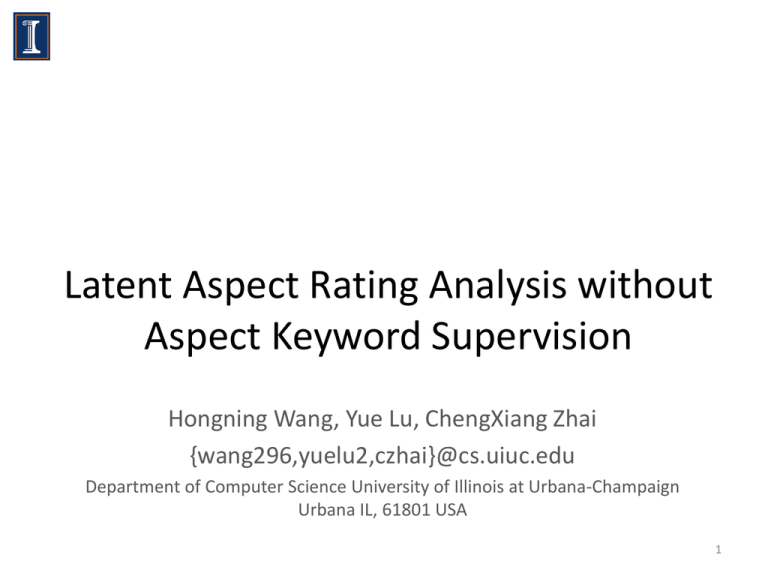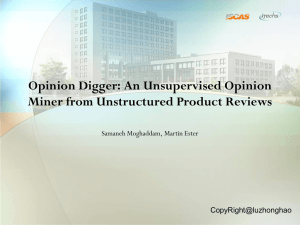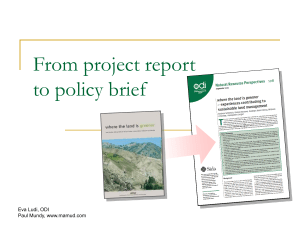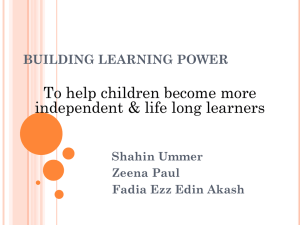slides - University of Illinois at Urbana
advertisement

Latent Aspect Rating Analysis without
Aspect Keyword Supervision
Hongning Wang, Yue Lu, ChengXiang Zhai
{wang296,yuelu2,czhai}@cs.uiuc.edu
Department of Computer Science University of Illinois at Urbana-Champaign
Urbana IL, 61801 USA
1
<
V.S.
Kindle 3
iPad 2
2
Reviews: helpful resource
3
Opinion Mining in Reviews
• Sentiment Orientation Identification
– e.g., Pang et.al 2002, Turney 2002
4
Information buried in text content
5
Latent Aspect Rating Analysis
• Wang et.al, 2010
Overall Rating
Text Content
Aspect
Segmentation
Aspect Rating Prediction
Aspect Weight Prediction
6
Previous Two-step Approach
Aspect Segmentation
Reviews + overall ratings
+
Aspect segments
location:1
amazing:1
walk:1
anywhere:1
room:1
nicely:1
appointed:1
comfortable:1
nice:1
accommodating:1
smile:1
friendliness:1
attentiveness:1
Latent Rating Regression
Term Weights Aspect Rating Aspect Weight
0.0
2.9
0.1
0.9
0.1
1.7
0.1
3.9
2.1
1.2
1.7
2.2
0.6
3.9
0.2
4.8
0.2
5.8
0.6
Gap ???
7
Comments on Two-step Solution
• Pros
– Users can easily control the aspects to be
analyzed
• Cons
– Hard to specify aspect keywords without rich
knowledge about the target domain
engine?
passenger safety??
transmission??
MPG??
traction control??
navigation??
8
A Generative Model for LARA
Entity
Aspects
Review
Aspect Rating Aspect Weight
Location
location
amazing
walk
anywhere
Room
room
dirty
appointed
smelly
Service
terrible
front-desk
smile
unhelpful
Excellent location in walking
distance to Tiananmen Square and
shopping streets. That’s the best
part of this hotel! The rooms are
getting really old. Bathroom was
nasty. The fixtures were falling off,
lots of cracks and everything
looked dirty. I don’t think it worth
the price. Service was the most
disappointing part, especially the
door men. this is not how you treat
guests, this is not hospitality.
0.86
0.04
0.10
9
Latent Aspect Rating Analysis Model
• Unified framework
Excellent location in walking
distance to Tiananmen Square and
shopping streets. That’s the best
part of this hotel! The rooms are
getting really old. Bathroom was
nasty. The fixtures were falling off,
lots of cracks and everything
looked dirty. I don’t think it worth
the price. Service was the most
disappointing part, especially the
door men. this is not how you treat
guests, this is not hospitality.
Rating prediction module Aspect modeling module
10
Model Discussion
• Aspect modeling part
– Identify word usage pattern
– Leverage opinion ratings to
analyze text content
• Rating analyzing part
– Model uncertainty from
aspect segmentation
– Informative feedback for
aspect segmentation
bridge
11
Model Discussion
LARAM
sLDA (Blei, D.M. et al., 2002)
• Predict aspect ratings
• Predict overall ratings
12
Model Discussion
LARAM
LRR (Wang et al., 2010)
• Jointly model aspects and
aspect rating/weights
• Segmented aspects from
previous step
13
Posterior Inference
• Variational inference
– Maximize lower bound of log-likelihood function
– Bridge: topic assignment
Aspect modeling part
Rating analyzing14part
Model Estimation
• Posterior constrained expectation maximization
– E-step: constrained posterior inference
– M-step: maximizing log-likelihood of whole corpus
• Note
Consistency with overall rating
Uncertainty in aspect rating
15
Experiment Results
• Data Set
– Hotel reviews from tripadvisor
– MP3 player reviews from amazon
16
Aspect Identification
• Amazon reviews: no guidance
battery life accessory service
file format volume
video
17
Quantitative Evaluation of Aspect
Identification
• Ground-truth: LDA topics with keywords prior for 7
aspects in hotel reviews
• Baseline: no prior LDA, sLDA
18
Aspect Rating Prediction I
• Ground-truth: aspect rating in hotel reviews
• Baseline: LDA+LRR, sLDA+LRR
19
Aspect Rating Prediction II
• Baseline: Bootstrap+LRR
20
Analysis
• Limitation: bag-of-word assumption
21
Aspect Rating Prediction II
• Baseline: Bootstrap+LRR
22
Aspect Weight Prediction
• Aspect weight: user profile
– Similar users give same entity similar overall rating
– Cluster users by the inferred aspect weight
23
Conclusions
• Latent Aspect Rating Analysis Model
– Unified framework for exploring review text data with
companion overall ratings
– Simultaneously discover latent topical aspects, latent
aspect ratings and weights on each aspect
• Limitation
– Bag-of-word assumption
• Future work
– Incorporate sentence boundary/proximity information
– Address aspect sparsity in review content
24
References
• Pang, B., Lee, L. and Vaithyanathan, S., Thumbs up?: sentiment
classification using machine learning techniques. In Proceedings of
the ACL-02 conference on Empirical methods in natural language
processing, P79-86, 2002.
• Turney, P., Thumbs up or thumbs down? Semantic orientation
applied to unsupervised classification of reviews. In Proceedings of
the 40th Annual Meeting of the Association for Computational
Linguistics, P417-424, 2002.
• Wang, H., Lu, Y. and Zhai, C., Latent aspect rating analysis on review
text data: a rating regression approach, In Proceedings of the 16th
ACM SIGKDD, P783-792, 2010
• Blei, D.M. and McAuliffe, J.D., Supervised topic models, Advances in
Neural Information Processing Systems, P121-128, 2008
• J. Graca, K. Ganchev, and B. Taskar. Expectation maximization and
posterior constraints. In Advances in Neural Information Processing
Systems, volume 20. MIT Press, 2007.
25
THANK YOU
26









